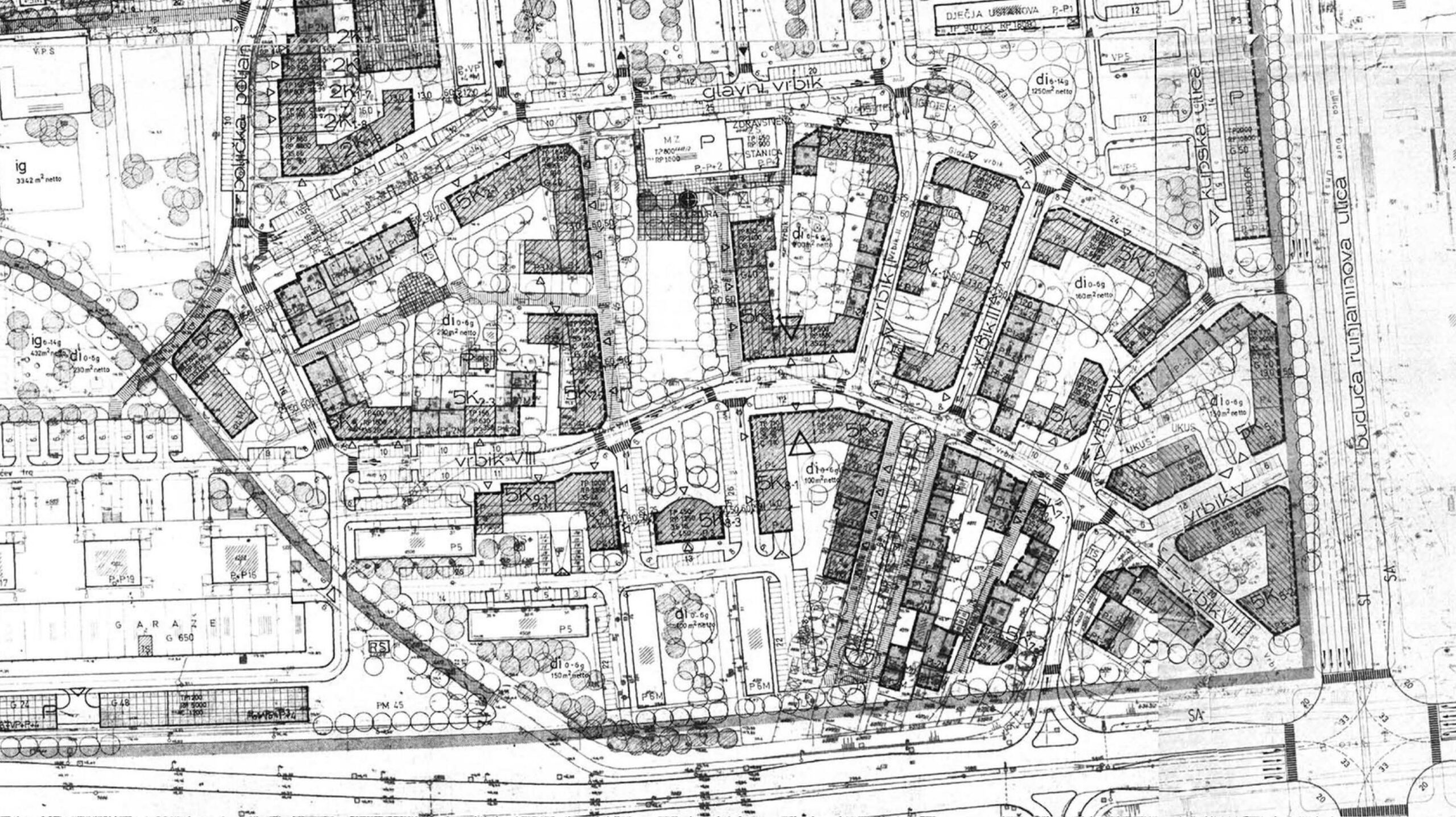In the 1980s, in parallel to the decline of large-scale planning, a local critique of modernist urbanism came to dominate the planning discourse in Zagreb, one that sought to implement strategies of urban regeneration on the omnipresent strata of persisting agricultural lots, and would soon be inscribed as the guiding ethos in the last socialist general plan. Concentrating their efforts on the central area of Trnje, then littered with scattered zones of informal construction that had hitherto resisted generation after generation of ambitious plans to convert it into a central representative and commercial part of Zagreb, local urban planners gradually formulated an innovative system of urban renewal that would enable its programmatic and morphological integration with the historic city. Breaking with the already exhausted expansionist strategy of large-scale greenfield planning, they strove to direct the future development of the city towards the densification and improvement of urban quality for previously “skipped-over” areas, with a newly found appreciation for the idiosyncrasies and complexities of the existing agricultural morphologies and heterogeneous buildings. The peculiar and deliberate choice of this kind of underlying urban strata as the basis of process-based urban renewal to harness the potential of both commercial and private actors promised a pronouncedly different urban outcome than the tabula rasa approach deployed at the apex of modernist urban planning only a decade earlier. However, the complex gestation process of required executive documents, the failure to create sufficient mechanisms of control, and the subsequent ascension of private ownership as the dominant spatial value all helped to usher in a period of frantic individual construction, signalling an abrupt end of this experiment. Rather than mere manifestations of capitalist transition, these processes will be framed as unintended echoes of the paradigm shift within the plans themselves.
DOI: https://doi.org/10.31577/archandurb.2023.57.3-4.7

This work is licensed under a Creative Commons Attribution 4.0 International License
